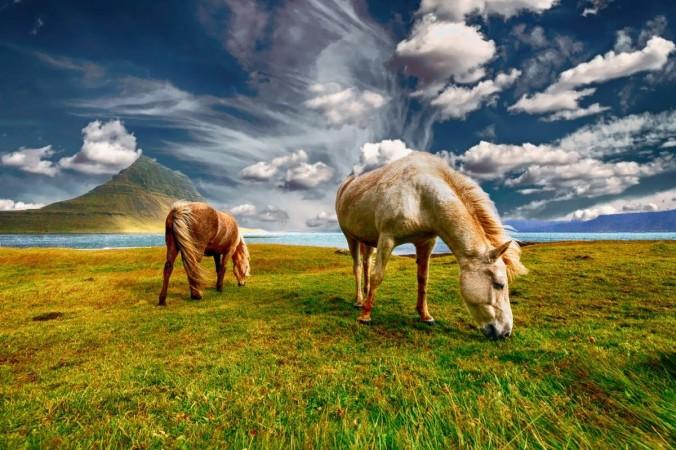A multinational research team discovered that progenitors of current domestic horses and the Przewalski horse crossed from Eurasia (Russian Urals, Siberia, Chukotka, and eastern China) to North America (Yukon, Alaska, and continental USA) at least twice. It occurred during the Late Pleistocene Period (2.5 million years ago - 11.7 thousand years ago).
The results and description of horse genomes have been published in the journal Molecular Ecology.
Horses migrated between continents not only in one direction, but also in the opposite direction. The first wave of migration primarily occurred from North America to Eurasia. The movement from Eurasia to North America dominated the second migration.

The most notable studies have concluded that most species only crossed the Beringian Land Bridge once, with horses crossing multiple times. This phenomenon could have a considerable impact on the genetic makeup of horse populations, making them particularly fascinating research subjects for paleogeneticists.
Horse DNA from both continents was analyzed by molecular biologists to discover the area of settlement of horses. They chose 78 samples of bones and teeth with adequate DNA from a total of 262. Radiocarbon dating and genetic analysis were carried out at laboratories in Denmark and the United States. They also examined the research data from 112 samples.

"The data shows that horses returned to North America from Eurasia across Beringia at about the same time as bison, brown bears, and lions," Dmitry Gimranov adds.
In the last "days" of the late Pleistocene, when the territory was not covered by water and it was like a bridge for the movement of many groups of animals, onsetting the climate warming during the beginning of the Holocene or 117,000 years ago and the last disappearance of Beringia at the end of the Pleistocene, the biogeographic significance of this ecological corridor radically changed the history of terrestrial animal species on both continents, wrote the authors.
Even though the North American horse species went extinct in the early Holocene, domestication brought horses to both continents, and they are currently found well beyond their original range.

















